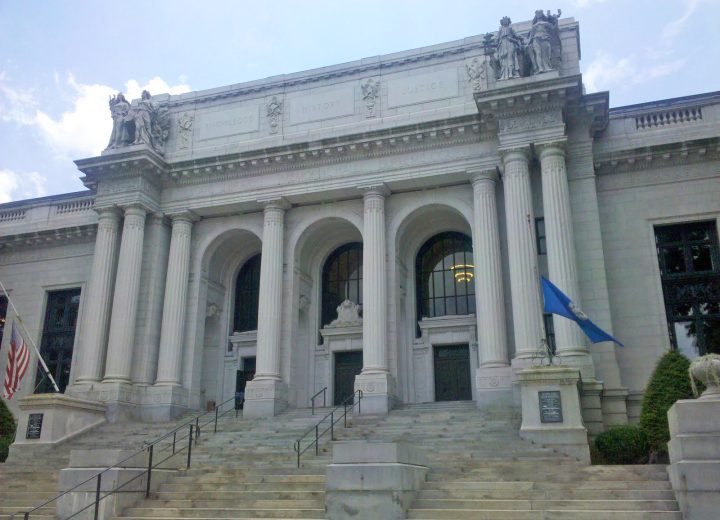Connecticut State Library & Supreme Court Building
Water Infiltration Study
Erected between 1908 and 1910, the Connecticut State Library at 231 Capitol Avenue is a Beaux-Arts style government building listed on both the State and National Registers of Historic Places. To accommodate diverse capacities as library, museum, and courthouse, the building is arranged in a T-shaped plan, with each wing devoted to a different purpose. The two-story facade, faced in coursed granite ashlar, converges at a central entrance pavilion, with Doric style columns and a monumental entry stair. At the south, an addition was constructed in 1968.
As the repository of local and state archival material and an important reference library both for legislators and the general public, the Connecticut State Library and Supreme Court Building could ill afford a leaky building enclosure. However, the effects of time and weather conspired to break down roof components at the building addition, which comprises approximately 6,100 sf of roof area. The State of Connecticut had used the building addition as museum storage, but planned to use the space for future exhibitions. Protection of exhibits from moisture damage was, therefore, of critical importance.
The State of Connecticut retained Hoffmann Architects + Engineers to investigate the sources of water infiltration and recommend corrective action. Following Hoffmann’s initial visual inspection, thermographic (infrared) scanning was conducted to document areas of moisture in the roof and surrounding masonry walls. Test probes revealed that a majority of roof area was saturated with water, and insulation had deteriorated to such a degree that it no longer provided thermal protection. The existing roof had exceeded its useful lifespan.
To resolve current moisture problems and prevent future leaks, Hoffmann recommended removal of the existing built-up roof and replacement with a modified-bitumen roof assembly. Our architects and engineers provided detailed explanations of the observations and evaluations that led to this recommendation, as well as a comparison of various low-slope roofing options and opinions of probable construction costs. With the guidance from Hoffmann Architects + Engineers, the State of Connecticut was prepared to address the roof leaks with a durable, long-lasting solution.
